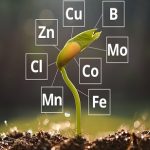Global Structural Steel Market
In building crucial infrastructure, structural steel, a type of carbon steel, is employed in a range of shapes. To compensate for concrete’s low tensile strength, it is primarily used as a reinforcement material. Steel can redistribute stress due to its flexibility and resistance to lengthwise stress. Appropriate industry standards define structure steel based on its chemical makeup and tensile characteristics, which can be changed to fulfill certain building specifications. Among other prominent forms of structural steel are universal beams, angled sections, and columns.
Recession Impact
The recession will significantly affect the world market for structural steel, according to the VMR. As more nations enter a recession, the already sluggish development of the global market is expected to decrease considerably more. According to thorough new research by the Globe Bank, the world may be moving closer to a global recession in 2023, as well as a string of financial crises that would irreparably affect emerging markets and developing economies as central banks simultaneously boost interest rates to fight inflation. In addition, central banks are expected to raise the average rate of their monetary policies internationally to roughly 4% by 2023, up more than 2% from their average in 2021, according to investors.
Market Dynamics
Infrastructure developments in developed and emerging countries are anticipated to continue to be the main drivers of structural steel demand. The increased housing needs brought on by the expanding population worldwide are one of the key factors affecting product demand. Additionally, structural steel is regarded as a green building material because of its recycling capabilities. It follows that market growth in the upcoming years is predicted to be fueled by an increase in the nation’s stock of green buildings. The market for structural steel is expected to grow gradually in the future years due to rising disposable income and technological advancements in prefabricated and pre-engineered building projects across the whole construction industry. Furthermore, the strong need for infrastructure in developing countries like China and India is expected to drive up the structural steel industry in the coming years. Nevertheless, the building sector’s market growth may be constrained by a need for more awareness of these structural steel advantages. The fluctuating cost of raw materials is the main problem impeding the market expansion for structural steel.
Regional Analysis
The Asia Pacific region dominates the global structural steel market. The increasing population in the area is attributable to this rise. Governments are developing housing policies and building smart cities to suit the region’s growing population’s housing needs. Increased demand for non-residential buildings, such as commercial buildings for job purposes, is another effect of the expanding population. These elements are anticipated to fuel the structural steel industry’s market expansion in the Asia Pacific region.
On the other hand, the second-largest market for global structural steel is in North America. The need for structural steel in this region is being driven by the exponential rise of the residential and housing sectors, leading to a structural steel industry boom. Significant economic losses were brought on by the COVID-19 epidemic in North America, mainly in the United States and Mexico. However, this region’s building and construction industry is anticipated to rebound in the following years, during the second quarter of 2020.
Key Companies
Notable and prominent players in the Global structural steel market include- Clariant AG (Switzerland), BASF SE (Germany), Huntsman International LLC (US), Bayer AG (Germany), The DOW Chemical Company (US), Solvay (Belgium), Nufarm (Australia), Evonik Industries AG (Germany), Croda International PLC (UK), Helena Agri-Enterprises LLC (US), Ashland Inc. (US), Land O’ Lakes Inc. (US), FMC Corp. (US), ADAMA Ltd. (Israel), Stepan Company (US), Baogang Group (China), Gerdau S.A. (Brazil), Nippon Steel Corporation (Japan) and others.
![[Market Research Reports] – Research Google News Blog | VMR.Biz](https://www.vmr.biz/wp-content/uploads/2022/12/logo-removebg-preview.png)











